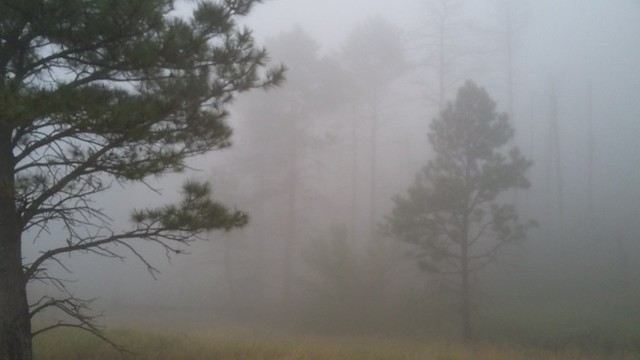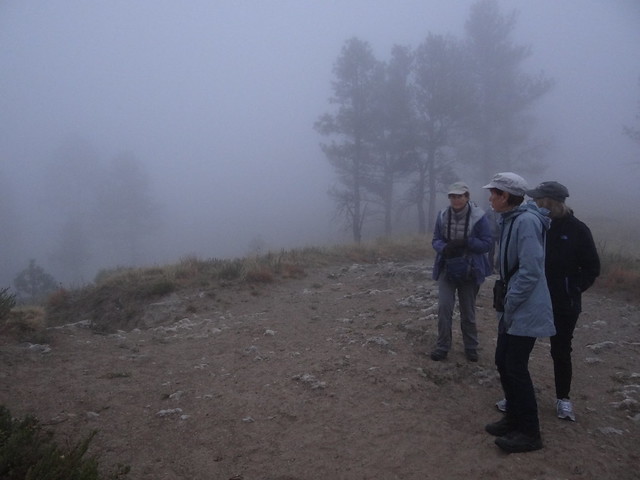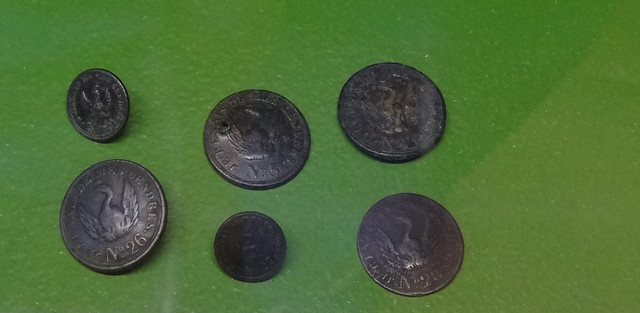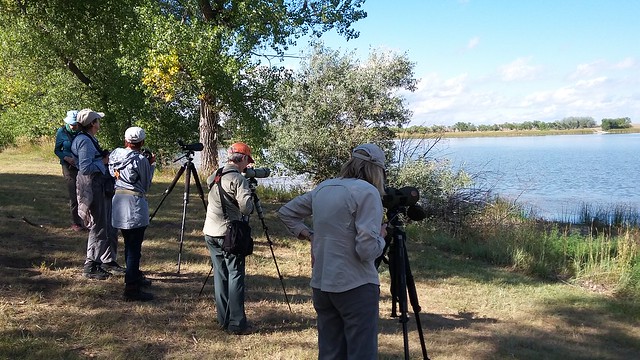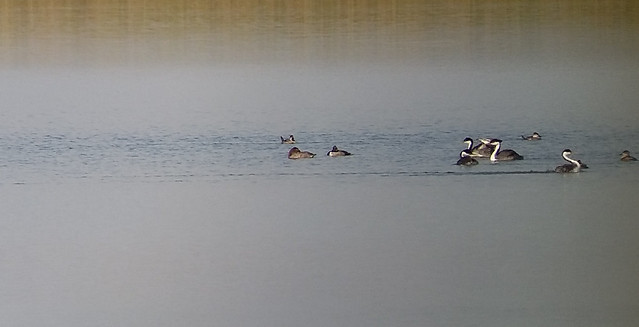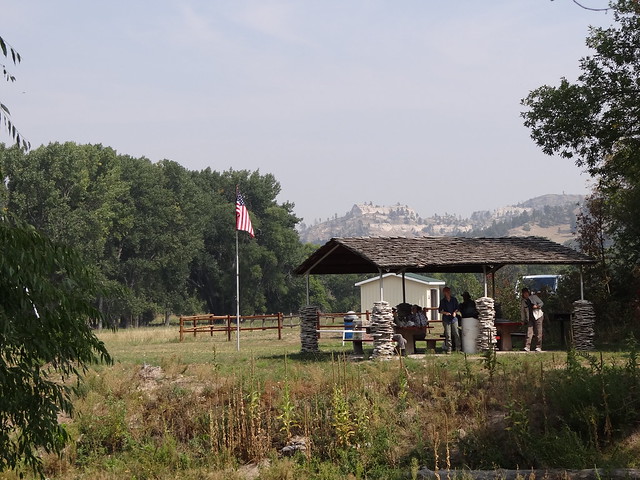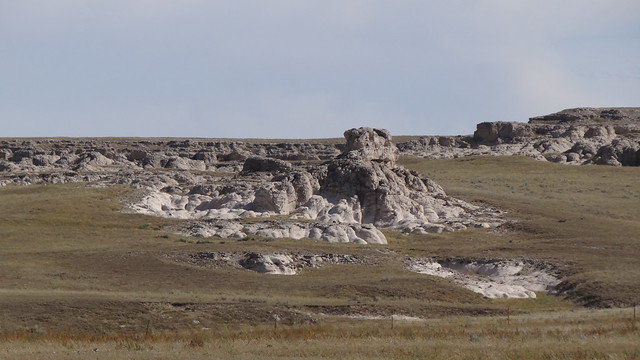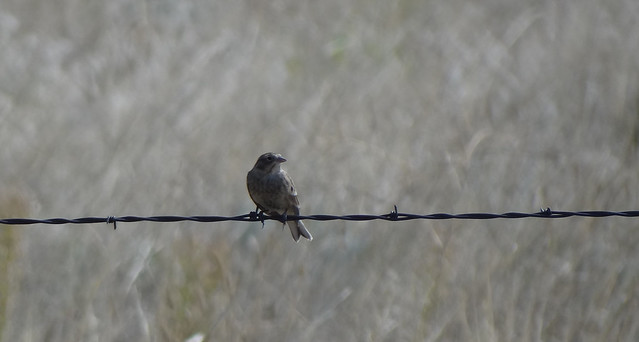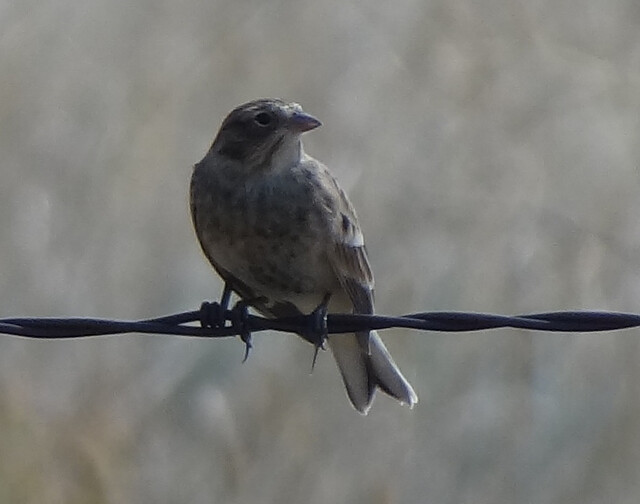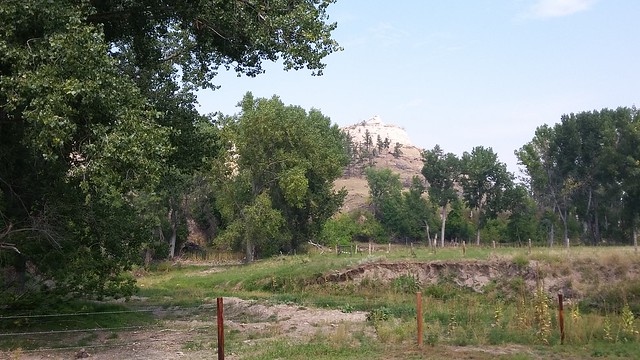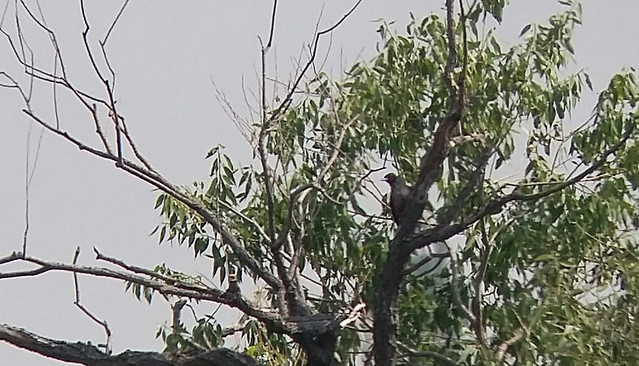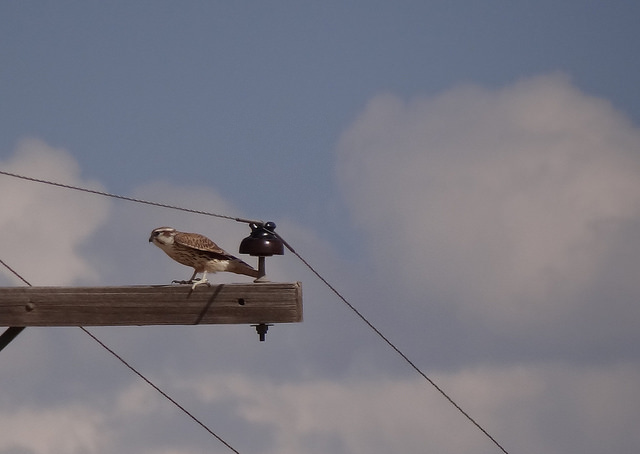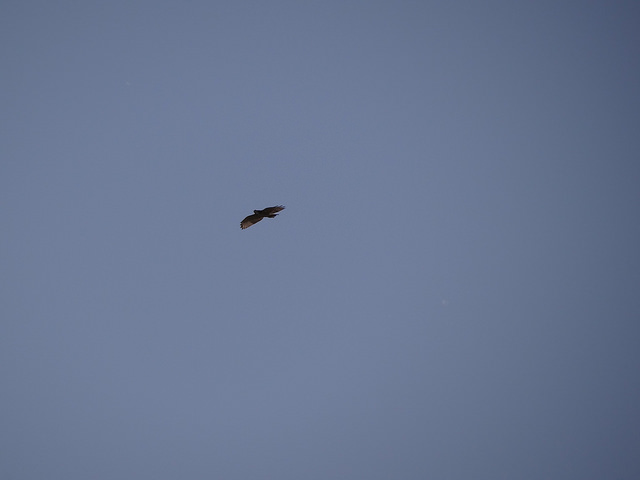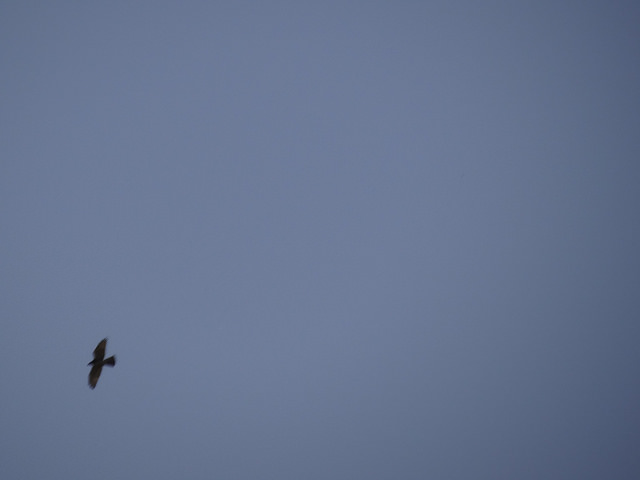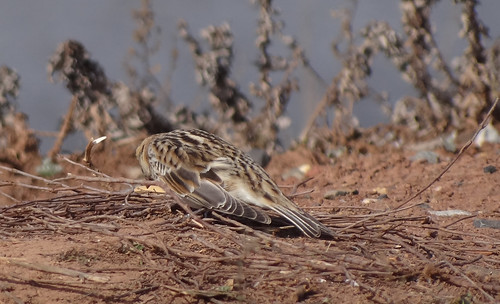
I’ve been having a great time this evening reading around in the new National Geographic guide: learning new things, being reminded of old things, and all in all admiring the book more with each turn of the page.
But how does it stack up against the competition?
That competition includes the previous editions of Nat Geo, of course; I hear scandalous rumors that not everyone buys each new edition as it appears. You’ll continue to be happy no matter which edition you have and use, but this seventh has so many improvements, large and small, that I can’t imagine not wanting to move along.
Take, for example, the Lapland longspur, a common bird and familiar to most birders, but one that can be hard to get a first handle on for new observers, especially in the east and southwest. The new Nat Geo retains the paintings of the species from the first edition, of 1983, but like the sixth, it annotates the figures with neat and concise summaries of the most important field characters. There is one critical difference, though: where the sixth edition simply points to the wingtip of one of the perched birds, noting the “very long primary projection,” the seventh adds an additional image of a disembodied folded wing, indicating that this is the “longspur with the longest primary projection past the tertials.” Each of the other longspur species now has a similar picture and a similar note, making explicit in word and image what before was available only in the facing-page text.
Shifting that information from the main text onto the plate (and ever so slightly reducing the white space on the page) makes room for a slightly larger and noticeably more legible font, and also lets the authors add a line about the subspecific affiliation of a specimen collected in the outer Aleutians. Trivial? Not if you happen to be so lucky as to be birding Attu — and not if you are interested, as all birders are, in continuously expanding the range of your knowledge.
The big Sibley guide has only four images of perched Laplands where the new Nat Geo has six, including a stub-tailed juvenile. But Sibley gives the reader four views of birds in flight, from above and below, which after all is how most longspurs are seen in the field. There is a picture of the folded wing here, too, with an annotation pointing out the length of the primary projection. Sibley’s feathers are more realistically shaped and the bunching of the outermost primaries more accurately depicted, but the whole wingtip is too short; the actual length is presented much more clearly in Nat Geo. Ten of one, five sixths of a dozen of the other.
Both books show all the characters necessary for field identification, but only Nat Geo explicitly points out the usefulness of the warm brown or rusty nape. Nat Geo illustrates and briefly describes the juvenile, an age class not mentioned in Sibley. The Sibley guide offers a much richer description of the species’ song, but leaves unmentioned the fact that this longspur intersperses whistles in its rattled flight call — a characteristic noted in Nat Geo as “distinctive.” Nat Geo’s map includes the bird’s range in Greenland, and its statement of range and abundance, though equally brief, is more differentiated than that in Sibley. All in all, there is a bit more information in Nat Geo, though Sibley’s illustrations of the bird strike me as rather better in this case.
The true acid test is a comparison with a book many birders might not think of at first. Birds of Europe by Lars Svensson, Killian Mullarney, and Dan Zetterström is widely acclaimed as the very best field guide to any avifauna anywhere in the world, and it is always worth consulting to learn more about any species that occurs in both the Old and the New Worlds. Its influence on North American field guides is most obvious in the use of annotations directly on the plates, an innovation meanwhile adopted by both the Sibley guide and, beginning with the sixth edition, Nat Geo.
Svensson et al. crowd illustrations of three species onto their plate, while both Sibley and Nat Geo have only two. But the European guide manages to show eight individuals, including three birds in habitat, one in flight, and one facing away; there is also a skylark for comparison. Four different plumage aspects are shown: a first-cycle bird, an adult female, and three adult males at different seasons. There is no juvenile, though the species breeds in Iceland, Scandinavia, and western Russia, and has nested in northern Britain.
The text here is remarkably long and detailed; naturally, that means that the type is quite small, tiny even when the book is open next to Nat Geo, but legible nonetheless. It begins with a coded summary of the species’ abundance and seasonal distribution in Britain, a neat feature impractical or impossible in a guide covering much of North America. Birds of Europe continues with a description of the breeding habitats, going beyond Nat Geo’s “arctic tundra” to mention some of the plant species with which nesting birds are associated. Alone among the guides compared here, this one warns the reader that the species is “rather wary,” creeping away or freezing when approached, then towering in powerful flight. These are essential details hinted at, but not completely laid out, in Nat Geo’s introduction to the family Calcariidae.
The identification paragraphs (plural!) in Birds of Europe are very thorough; salient characters distinguishing the species from other buntings are printed in italics. Structure, soft part colors, and the precise breast pattern of males in winter are all described. Calls and songs are described in even more detail than in the Sibley guide, and this is the only guide to describe the song flight, performed “with fanned tail and intermittent hovering.”
If Svensson et al. happened to cover the birds of North America, the choice would be clear. As it stands, though, for most birders, the choice between Nat Geo and the big Sibley will come down to taste and habit. The chief exception: beginners, who will be served much better by the more extensive prose and more complete information in the new Nat Geo. Every birder, however, will want to read this new edition and incorporate what it says into her store of birding lore.

